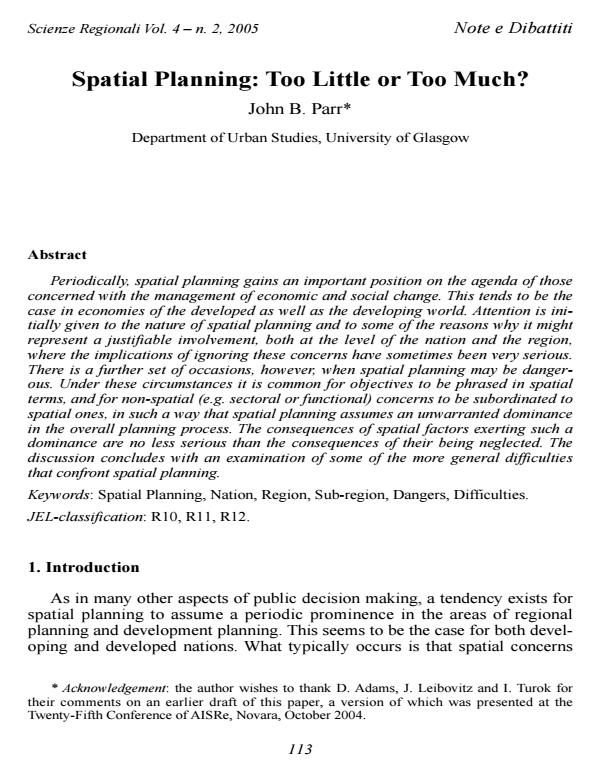Spatial Planning: too little or too much?
Titolo Rivista SCIENZE REGIONALI
Autori/Curatori John Parr
Anno di pubblicazione 1 Fascicolo 2005/2
Lingua Italiano Numero pagine 17 P. Dimensione file 62 KB
DOI
Il DOI è il codice a barre della proprietà intellettuale: per saperne di più
clicca qui
Qui sotto puoi vedere in anteprima la prima pagina di questo articolo.
Se questo articolo ti interessa, lo puoi acquistare (e scaricare in formato pdf) seguendo le facili indicazioni per acquistare il download credit. Acquista Download Credits per scaricare questo Articolo in formato PDF

FrancoAngeli è membro della Publishers International Linking Association, Inc (PILA)associazione indipendente e non profit per facilitare (attraverso i servizi tecnologici implementati da CrossRef.org) l’accesso degli studiosi ai contenuti digitali nelle pubblicazioni professionali e scientifiche
Periodically, spatial planning gains an important position on the agenda of those concerned with the management of economic and social change. This tends to be the case in economies of the developed as well as the developing world. Attention is initially given to the nature of spatial planning and to some of the reasons why it might represent a justifiable involvement, both at the level of the nation and the region, where the implications of ignoring these concerns have sometimes been very serious. There is a further set of occasions, however, when spatial planning may be dangerous. Under these circumstances it is common for objectives to be phrased in spatial terms, and for non-spatial (e.g. sectoral or functional) concerns to be subordinated to spatial ones, in such a way that spatial planning assumes an unwarranted dominance in the overall planning process. The consequences of spatial factors exerting such a dominance are no less serious than the consequences of their being neglected. The discussion concludes with an examination of some of the more general difficulties that confront spatial planning.
John Parr, Spatial Planning: too little or too much? in "SCIENZE REGIONALI " 2/2005, pp , DOI: